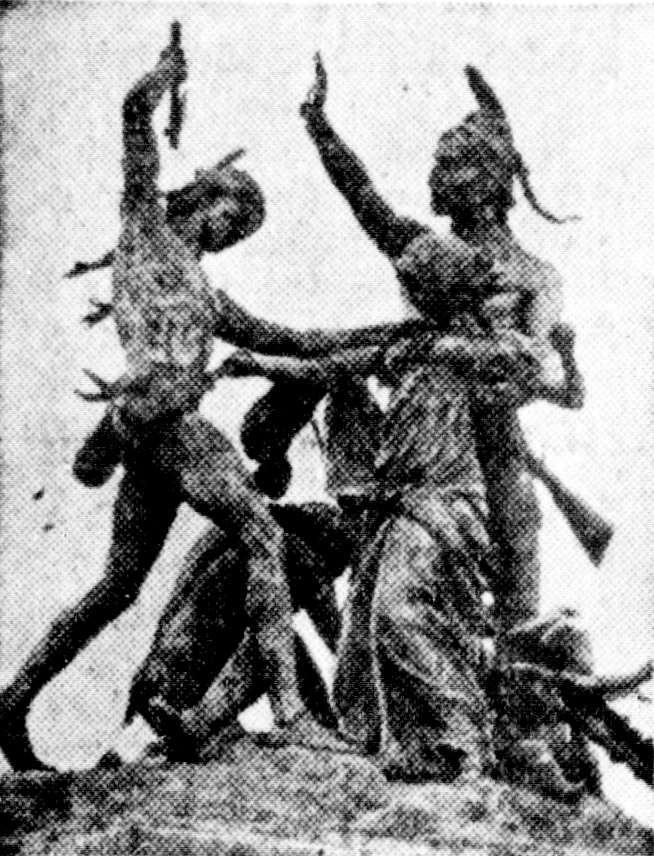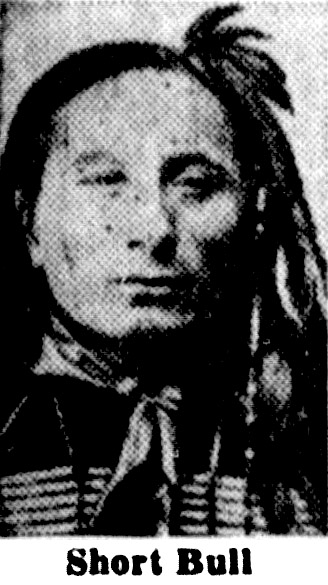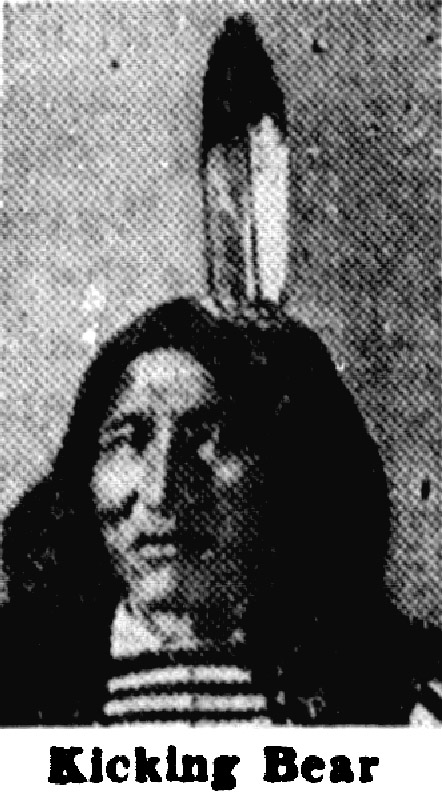Historic Highlights
by Elmo Scott Watson
(Released by Western Newspaper Union.)
Paradox in Bronze
THIS is the story of a paradox cast in bronze.
In the museum of the Chicago Historical society stands the statuary group shown below:

Fort Dearborn Massacre
It represents an incident which is supposed to have taken place during the Fort Dearborn Massacre on August 15. 1812. At the left, with up raised tomahawk, is a fierce young Pottawatomie brave. The stalwart figure at the right is the noble Chief Black Partridge, who is warding off the murderous blow, aimed by his tribesman, at the young woman in the center. She is the step-daughter of John Kinzie, the trader, and the wife of Lieut. Linai T. Helm of Fort Dearborn's ill-fated garrison.
The word “supposed” is used in the statement above because it is very doubtful indeed if this dramatic event ever took place. It was first recorded in Mrs. Juliette A. Kinzie's book, “Wau-Bun, the ‘Early Day of the Northwest,’” published in 1856. But because of the many inaccuracies in her account of the massacre, historians discount it heavily as a reliable source of information.
So the first paradox connected with the Fort Dearborn Massacre statue is that the sculptor should have chosen an apocryphal happening to immortalize in bronze when he might have used some equally thrilling and more authentic incident. He was Carl Rohl-Smith, a Dane, who came to Chicago while work on the World's Columbian Exposition of 1893 was in progress. He was commissioned by George M. Pullman, the sleeping car magnate, to prepare a model for a group commemorating the Fort Dearborn Massacre.

Short Bull
At that time a party of Sioux Indians, who had taken part in the Ghost Dance “uprising” of 1890-91 in South Dakota, were being held as prisoners of war at Fort Sheridan, north of Chicago. From Gen. Nelson A. Miles, military commander of that district, the sculptor obtained permission to have two of these Sioux act as models for the principal Indian figures in the group. They were Short Bull, high priest of the Ghost Dance, and Kicking Bear, a noted warrior who had helped him spread its doctrines among his people.
According to a contemporary writer, “the newspapers give some amusing accounts of their demeanor in the studio, their mixture of docility, self-assertiveness, etc. It chanced that the real disposition of the two principal models were the reverse of their assumed characters, and Kicking Bear (who when wearing his native dress and war paint carried a string of six scalps) was amused that he was assigned the more humane part. “‘Me, good Injun’ he cried, ‘Him, bad Injun!’ and he laughed loudly at the jest.”

Kicking Bear
So that is the other paradox of the Fort Dearborn Massacre statue. Short Bull, the dreamer, the man of peace, who urged his followers to refrain from hostile acts against the whites, is depicted as a murderous young brave. But Kicking Bear, the ruthless warrior, who used the new religion as a means of inciting the Sioux to rebellion, is the “noble red man” saving a white woman's life. And thus they are perpetuated in enduring bronze!
The Fort Dearborn Massacre monument was first erected at the foot of Eighteenth street near Lake Michigan, for it was among the sand dunes at this place that the Pottawatomies swooped down upon Capt. Nathan Heald's little command and killed 26 soldiers, as well as 27 civilians who were accompanying the military on their retreat from Fort Dearborn to Fort Wayne in Indiana. It stood there for many years, until the ravages of vandals made it necessary to remove the statuary group to the historical society building.
Paradox in Bronze, The Frontier, O'Neill City, Holt County, Neb., August 21, 1941. (PDF)